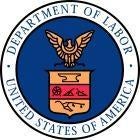The mining environment presents unique challenges for the men and women who work underground. In the event of a mine emergency, miners must react quickly, and one of the first things they are trained to do is activate their breathing apparatus, or self-contained self-rescuer. Underground coal miners are required to always wear or have ready access to SCSRs, which can provide up to 60 minutes of breathable air should a fire or explosion occur.
Last week, the Mine Safety and Health Administration, in conjunction with the department’s Occupational Safety and Health Administration and the National Institute for Occupational Safety and Health, announced that one type of the SCSR, the CSE SR-100 must be phased out of mines starting immediately.
These actions have come about after problems were identified with the units. NIOSH identified a potential problem with the starter oxygen system on two of the units. Then CSE Corp., which manufactured SR-100s, noted a similar issue during routine quality control testing. MSHA and NIOSH launched an investigation, and the company voluntarily stopped selling the units.
NIOSH developed a protocol and began a testing process in October 2010 for the prevalence of failure of the oxygen starter. The agency, along with MSHA, collected 500 of the approximately 70,000 units deployed in underground coal mines. Five of those units proved defective, exceeding the maximum allowable failure rate of 1 percent, which includes a safety margin for error. NIOSH issued the report of its joint investigation with MSHA nearly three weeks ago.
Mine operators must immediately begin providing increased protections for miners who have no fixed work place, and have approximately one year to replace SR-100s that are worn or carried by miners and stored on mantrips, which transport miners down into an underground mine and out again. The entire phase-out of all of these units must be completed by the end of 2013.
There are several reasons why we have opted for a gradual process. Currently, approximately 66,000 SR-100s are worn, carried, or stored in underground coal mines. Due to the large number, the shortage of readily available replacements and the low probability of failure, we feel confident that an orderly phase-out – rather than an immediate withdrawal – will better protect the safety of our nation’s miners.
Joseph A. Main is Assistant Secretary of Labor for Mine Safety and Health.


 />i
/>i

